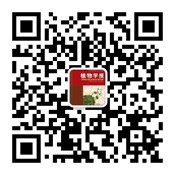Effects of Enhanced UV-B Radiation on Pollen Activities of 2 Tomato Cultivars in Terms of Endogenous Hormone,Polyamine and Proline Levels in Stamens
Hui Yang;Lizhe An;Zhiye Wang;Jianping Zhou;Xunling Wang
Chinese Bulletin of Botany. 2007, 24(02):
161-167.
 Abstract
(
2252 )
Abstract
(
2252 )
 PDF (260KB)
(
1867
)
PDF (260KB)
(
1867
)
 Save
Related Articles |
Metrics
Save
Related Articles |
Metrics
The effect of enhanced UV-B radiation on pollen activities, endogenous hormone .(indole-3-acetic acid (IAA), gibberellic acid (GA), zeatin riboside (ZR), abscisic acid (ABA)) content and free polyamine and proline levels was studied in stamens of 2 tomato cultivars, Tonghui (TH) and Xiaguang (XG), which differ in ripening date. Cultivars were exposed to UV-B radiation at ambient (as a control), ambient plus 2.54 KJ.m-2.d-1 (T1) and ambient plus 4.
25 KJ.m-2.d-1 (T2) levels (simulating a 12% and 20% ozone depletion, respectively, at Lanzhou, 36°N, 103°E, at summer solstice) under field conditions. Both pollen germination and pollen tube growth were inhibited in TH, whereas only pollen germination was affected in XG with 2 doses of UV-B radiation. Endogenous GA level declined
markedly in stamens of both cultivars. In stamens of TH, both Put and Spd levels increased, whereas Spm level and the ratio of Put to Spd+Spm decreased. In stamens of XG under T2 treatment, Decreased Put, Spm and Spd content resulted in a high ratio of Put to Spd+Spm in stamens of XG under T2 treatment. The proline level did not change in stamens of TH but decreased in stamens of XG with high UV-B radiation. Thus, change in pollen activity was associated with reduced GA, Spm and proline levels caused by enhanced UV-B radiation in stamens of both tomato cultivars. Change in polyamine and proline levels in response to UV-B radiation indicated that XG might be more
sensitive to UV-B stress.

 Table of Content
Table of Content
 Home
Home